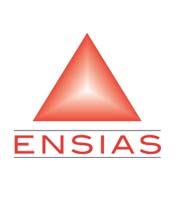- Accueil
-
L'Ecole
-
FORMATIONS
-
FORMATION INGENIEUR
-
Nouvelles filières offertes
- Ingénierie Intelligence Artificielle (2IA)
- Smart Supply Chain & Logistics (2SCL)
- Business Intelligence & Analytics (BI&A)
- Cybersécurité, Cloud et Informatique Mobile (CSCC)
- Data and Software Sciences (D2S)
- Génie de la Data (GD)
- Génie Logiciel (GL)
- Ingénierie Digitale pour la Finance (IDF)
- Smart System Engineering (SSE)
- REGLEMENT DES ETUDES DE L’ENSIAS CYCLE INGENIEUR
-
Nouvelles filières offertes
-
FORMATION INGENIEUR
- FORMATION CONTINUE
-
Recherche
- INTERNATIONAL
- ENTREPRISES
- VIE ESTUDIANTINE
- BIBLIOTHEQUE
LES DERNIÈRES INFORMATIONS
Convolutional Neural Networks for Traffic Signs Recognition
| Titre | Convolutional Neural Networks for Traffic Signs Recognition |
| Publication Type | Journal Article |
| Year of Publication | 2020 |
| Authors | Bousarhane, B, Bouzidi, D |
| Journal | Communications in Computer and Information Science |
| Volume | 1264 |
| Pagination | 73-91 |
| Mots-clés | Accidents, Advanced driver assistance systems, Application fields, Automobile drivers, Autonomous vehicles, Classification of traffic signs, Computational loads, Convolutional neural networks, Data communication systems, Deep learning, Hardware resources, Learning approach, Learning systems, Real time response, Recognition accuracy, Recognition systems, Security of data, Traffic signs |
| Abstract | The application fields of traffic signs recognition are multiple, including autonomous vehicles, self-driving cars, Advanced Driver Assistance Systems (ADAS), etc. The ultimate goal of these systems is to save lives on roads by reducing the number of accidents. Specifically, the incidents caused by drivers’ distraction and inattention. Efficient traffic signs recognition systems represent then one of the major components in making cars safer, not only for drivers, but for pedestrians as well. In this domain of research, Deep Learning approaches have gained more popularity due to their appealing performances. However, these approaches still face many difficulties, especially, those related to adverse conditions and real time response. Furthermore, these methods are very demanding in terms of hardware requirements, computational load and training data. From this perspective, our work aims to create an efficient Deep Learning model, for the classification of traffic signs, under adverse and challenging conditions. The objective of the research is to reach a high recognition accuracy, via a faster learning process, while using limited data and hardware resources. The obtained results show that CNNs could reach an accuracy of more than 99.6% for signs with no challenges. However, their accuracy decreases when dealing with more challenging traffic signs. The results shows also that lighter architectures are efficient in terms of generalization, accuracy and speed. © 2020, Springer Nature Switzerland AG. |
| URL | https://www.scopus.com/inward/record.uri?eid=2-s2.0-85097401164&doi=10.1007%2f978-3-030-61143-9_7&partnerID=40&md5=83a83249f516a7f0fd24a44b61df2674 |
| DOI | 10.1007/978-3-030-61143-9_7 |
Revues:
LIENS UTILES
Localisation
Contactez-nous
ENSIAS
 Avenue Mohammed Ben Abdallah Regragui, Madinat Al Irfane, BP 713, Agdal Rabat, Maroc
Avenue Mohammed Ben Abdallah Regragui, Madinat Al Irfane, BP 713, Agdal Rabat, Maroc
![]() Télécopie : (+212) 5 37 68 60 78
Télécopie : (+212) 5 37 68 60 78
![]() Secrétariat de direction : 06 61 48 10 97
Secrétariat de direction : 06 61 48 10 97
Secrétariat général : 06 61 34 09 27
Service des affaires financières : 06 61 44 76 79
Service des affaires estudiantines : 06 62 77 10 17 / n.mhirich@um5s.net.ma
CEDOC ST2I : 06 66 39 75 16
Résidences : 06 61 82 89 77
- Compteur de visiteurs:640,798
Education - This is a contributing Drupal Theme
Design by WeebPal.
Design by WeebPal.



































